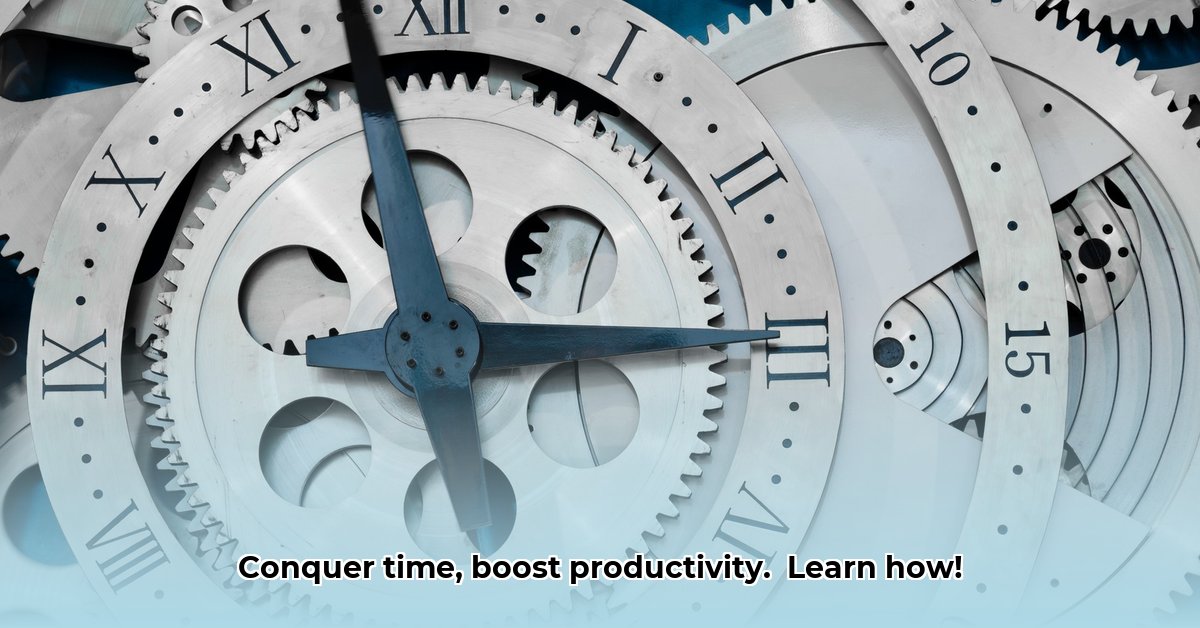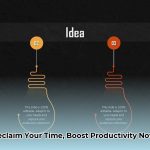Overwhelmed by endless tasks? Juggling work, family, and a semblance of personal life feels impossible? This in-depth guide equips you to craft impactful, persuasive time management presentations that resonate. For more time management principles, check out this helpful guide: Time Management Principles. Uncover proven strategies, grasp core principles, construct a tailored system that supercharges productivity for both you and your audience. Master proven methods to bypass typical roadblocks, and adapt to the ever-shifting sands of daily life. Ready to seize control and achieve peak performance?
Crafting High-Impact Time Management Presentations: Achieve More Now!
Time, that elusive resource, always seems to be slipping through our fingers. But are we truly productive, or merely caught in the whirlwind of busyness? Real time management isn’t just about clocking more hours; it’s about optimizing those hours for maximum impact. This guide provides actionable insights for developing presentations that empower others to achieve the same, focusing on proven strategies that deliver tangible results.
Diagnosing Your Time: The Bedrock of Effective Time Management
Before diving into slide design, it pays to conduct a thorough audit of your own time management habits. Do you consistently find yourself racing against the clock, chronically short on time? The journey begins with ruthless self-assessment. Identify your biggest time sinks. Are you a “morning person” or a “night owl”? Leverage your natural rhythm for peak performance. Recognizing these individual tendencies is invaluable in shaping a customized time management system that truly resonates with your target audience.
Actionable Step: Maintain a detailed time log for one week. Meticulously record every activity, from responding to emails to attending meetings and scrolling through social media. This exercise often reveals surprising insights into where your time is actually being spent. This data-driven approach will set the stage for a presentation that addresses your audience’s real-world challenges and pain points.
Essential Time Management Techniques: Constructing Your Presentation’s Framework
A range of tried-and-true techniques can yield significant improvements in time management and can be presented as actionable takeaways for your audience. Let’s consider some highly effective and easy-to-grasp methods:
-
The Eisenhower Matrix (Urgent/Important): This powerful tool takes your to-do list to the next level. Categorize tasks based on their urgency and importance to prioritize effectively. Immediately tackle tasks that are both urgent and important. Schedule tasks that are important but not urgent. Delegate tasks that are urgent but not important. Ruthlessly eliminate tasks that are neither urgent nor important. The Eisenhower Matrix provides a strategic decision-making framework for maximizing your time and energy.
-
The Pomodoro Technique: Unlock Productivity with Short Bursts: This technique leverages focused work sessions interspersed with short breaks to optimize concentration and prevent mental fatigue. A standard Pomodoro cycle consists of 25 minutes of concentrated work followed by a 5-minute break. After completing four Pomodoros, take a longer, more restorative break (typically 15-20 minutes). The Pomodoro Technique can be adapted to suit various work environments and individual preferences, promoting sustained focus and preventing burnout.
-
Time Blocking: Map Out Your Path to Success: Dedicate specific time blocks in your calendar to particular tasks or activities. Treat these blocks as inviolable appointments. Time blocking provides structure, minimizes distractions, and prevents tasks from encroaching on one another – a common productivity drain. This method is exceptionally helpful for visualizing your day, prioritizing tasks, and ensuring that critical activities receive adequate time and attention.
By incorporating practical application tips, real-world case studies, and relatable anecdotes into your presentation, you will enhance audience engagement and boost knowledge retention.
Designing Your Personalized System: A Tailored Blueprint for Success
Time management isn’t a rigid, one-size-fits-all formula; it’s a highly adaptable process that must be tailored to individual circumstances. Emphasize the importance of personalization in your presentation, highlighting the need for each individual to customize their approach based on their unique preferences, strengths, and weaknesses. Equip your audience with the knowledge and tools they need to design a system that works optimally for them.
Provide the following step-by-step guide for designing a personalized time management system:
- Define Your Goals: Start by identifying both short-term and long-term goals to provide clear focus and direction.
- Prioritize Ruthlessly: Employ the Eisenhower Matrix or similar prioritization techniques to rank tasks based on their impact and urgency. Prioritize high-impact activities that will generate the greatest results.
- Schedule Strategically: Block out specific time slots for individual tasks and activities. Incorporate realistic buffers to account for unforeseen delays, which studies estimate have a high probability of occurring in any project timeline.
- Review and Refine: Regularly assess the effectiveness of your system, identifying what’s working well and what needs improvement. Flexibility is paramount in the time management process; be prepared to adapt your strategies as needed for optimal outcomes.
Overcoming the Procrastination Hurdle: Proven Strategies for Taking Action
Procrastination, often stemming from fear of failure, perfectionism, or feeling overwhelmed, is a significant obstacle to productivity. Empower your audience with these proven strategies for overcoming this common challenge:
- Break Down Tasks: Deconstruct intimidating, large-scale projects into smaller, more manageable tasks to reduce feelings of overwhelm.
- The Power of Rewards: Celebrate small victories. Reward yourself for completing tasks, reinforcing positive habits and maintaining consistent motivation.
- Address Underlying Issues: Guide your audience to identify and address the root causes of their procrastination. This may involve seeking coaching, engaging in self-reflection, or seeking professional guidance.
Continuous Improvement: The Road to Sustained Productivity
Effective time management isn’t a destination to be reached, but rather a continuous journey of refinement and optimization. Emphasize the importance of regularly reviewing and adjusting time management systems for sustained long-term productivity and success. This ongoing process may involve experimenting with innovative techniques, optimizing existing schedules, or adopting cutting-edge productivity apps.
Inspire your audience to embrace a mindset of continuous improvement and adaptation in your presentation.
Sample Time Management Presentation Structure
The following is a suggested presentation structure that can be tailored to fit your specific needs and audience:
| Section | Time Allocation (Minutes) | Key Focus |
|---|---|---|
| Introduction | 5 | Capture attention with a compelling hook, emphasize the importance of effective time management in today’s world |
| Diagnosing Your Time | 10 | Guide audience through self-assessment exercises, identify common time-wasting activities and hidden productivity drains |
| Core Time Management Techniques | 15 | Introduce and illustrate proven techniques such as the Eisenhower Matrix, Pomodoro Technique, and Time Blocking |
| Building Your Personalized System | 15 | Walk audience through goal setting, prioritization, scheduling, and the iterative review process |
| Conquering Procrastination | 10 | Provide actionable strategies, guide audience to recognize and address the underlying causes of procrastination |
| Continuous Improvement | 5 | Emphasize the need for regular review, adaptation, and leveraging technology to enhance time management effectiveness |
| Questions & Discussion | 10 | Create an open forum for questions, address concerns, and encourage further discussion to maximize audience engagement |
By centering your presentation on actionable insights, relatable examples, and interactive elements, you’ll create a high-impact experience that empowers your audience to reclaim control of their time and increase their productivity. Emphasize the importance of discovering their optimal approach, rather than imposing a rigid, inflexible system.
The Art of Work-Life Harmony: Time Management Techniques for a Balanced Life
Key Takeaways:
- Mastering time management is essential for achieving work-life balance, reducing stress, and enhancing overall satisfaction.
- Understanding your individual work style and pinpointing time-wasting activities are critical first steps in the process.
- Leveraging established techniques such as the Eisenhower Matrix and the Pomodoro Technique can lead to significant improvements in productivity and work-life integration.
- Developing a customized time management system that aligns with your individual needs and preferences is essential for long-term success.
- Proactively addressing procrastination and regularly evaluating your time management system are vital for maintaining equilibrium and minimizing stress.
Diagnosing Your Time: The Foundation of Balance
Before diving into specific techniques, dedicate time to understanding your relationship with time: How are you currently allocating your time? Are you most productive in the morning or the evening? Honest self-assessment is the cornerstone of achieving work-life harmony through effective time management. By identifying your peak productivity periods and energy drainers, you can proactively schedule tasks to maximize efficiency and minimize stress.
Essential Time Management Techniques
A variety of techniques can dramatically improve your time management approach.
- The Eisenhower Matrix (Urgent/Important): Efficiently categorize tasks based on their urgency and importance, enabling you to prioritize effectively and focus on what truly matters.
- The Pomodoro Technique: Work in focused bursts, such as a 25-minute work period followed by a short break, to enhance concentration, reduce mental fatigue, and improve overall productivity.
- Time Blocking: Allocate specific time blocks in your calendar for particular tasks or activities, providing a visual representation of your day and ensuring adherence to your plan.
Building Your Personalized System
Design a system that resonates with you. Experiment with different techniques and approaches to identify what feels most natural and yields the best results. What strategies consistently boost your efficiency? Blend techniques to maximize effectiveness. Flexibility is key; your system should evolve to adapt to your changing needs and schedule.
Taming the Procrastination Beast
Procrastination, a significant productivity barrier, often stems from fear, self-doubt, or perfectionism. Take proactive steps to address procrastination. Break down large tasks into smaller, more manageable steps and reward yourself for completing them. Implement the “two-minute rule”—if a task can be completed in less than two minutes, do it immediately to prevent it from lingering on your to-do list and creating unnecessary stress.
Adapting and Refining Your Approach
Your time management system should be viewed as a living document that evolves over time. Regularly evaluate your progress: What’s working effectively? What needs refinement? Life circumstances change, and your time management system should adapt accordingly. This continuous improvement is crucial for sustaining work-life balance over the long term.
Thrive Under Pressure: Mastering Time Management in Demanding Work Environments
Key Takeaways:
- Effective time management is paramount for reducing stress and fostering well-being in fast-paced, high-pressure work environments.
- A personalized approach, incorporating techniques such as the Eisenhower Matrix, the Pomodoro Technique, and time blocking, is essential for establishing a successful routine.
- Consistent application, regular evaluation, and flexibility are critical for sustained success in mastering time management in demanding work environments and should be prioritized at all times.
- Time management strategies must be tailored to individual needs and organizational contexts for maximum buy-in and effectiveness.
Understanding Your Time: The Foundation for Success
Before implementing specific techniques, dedicate time to understanding your relationship with time. Track your activities and identify your biggest time sinks. This data-driven approach will lay a strong foundation for effective time management.
Proven Time Management Techniques: Tried and True
Established methods can dramatically improve your time management capabilities.
- The Eisenhower Matrix (Urgent/Important): Expertly categorize tasks to minimize crises and proactively manage your workload.
- The Pomodoro Technique: Work in focused bursts to combat burnout and maintain optimal concentration. Adjust time intervals to suit your individual needs and enhance performance.
- Time Blocking: Provide structure and help you stay on track, creating a visual roadmap for your day and ensuring that critical tasks receive adequate attention.
Building Your Personalized System
Seamlessly integrate time management techniques into a personalized system using a digital calendar, planner, or specialized app. Emphasize that this system should align with your workflow, not adhere to a rigid, inflexible formula.
Conquering Procrastination: Defeat the Enemy
Procrastination often arises from various factors, including fear of failure and perfectionism. Proactively address procrastination by breaking down large tasks into smaller, more manageable steps and rewarding yourself for reaching key milestones.
Adaptability and Refinement: The Ongoing Journey
Mastering time management in high-pressure work environments requires a commitment to regularly evaluating your system and making necessary adjustments.
Leveraging Technology: Tools and Resources
Explore project management software, calendar apps, time-tracking tools, and productivity-enhancing apps. Select the tools that seamlessly integrate into your workflow and maximize your efficiency.
Conquer College: Time Management Strategies for Academic Success
Key Takeaways:
- Effective time management is essential for achieving academic success, minimizing stress, and promoting overall well-being in the demanding college environment.
- A personalized approach, tailored to individual learning styles and energy levels, is key for achieving consistent and effective results.
- Proactive planning, prioritizing tasks, and regularly reviewing your time management system are essential components of a successful strategy for college students.
- Utilizing tools such as time blocking, the Pomodoro Technique, and the Eisenhower Matrix can significantly improve productivity in multiple areas of academic life.
- Overcoming procrastination involves self-awareness, breaking down large tasks, rewarding milestones, and establishing accountability.
Understanding Your Time: The Essential First Step
Before diving into specific time management strategies, dedicate time to understanding how you currently spend your time. Track your activities and identify hidden time sinks. Self-awareness is crucial for enhancing efficiency and productivity.
Mastering Your Schedule: A Weekly Plan
Creating a comprehensive weekly plan is essential for effective time management. Allocate specific time slots for classes, studying, social activities, and personal commitments. Schedule regular breaks to prevent burnout and maintain focus. Treat your weekly plan as a non-negotiable appointment.
Prioritizing Tasks: The Eisenhower Matrix
Learn to leverage the Eisenhower Matrix (Urgent/Important) to prioritize tasks effectively. Focus on activities that truly matter and avoid feeling overwhelmed by less important demands.
Time Blocking: The Power of Scheduled Focus
Implement time blocking to cultivate focused work habits. Allocate specific time blocks for individual tasks, minimizing distractions and maximizing concentration.
The Pomodoro Technique: Short Bursts, Big Results
The Pomodoro Technique enhances concentration and prevents mental fatigue through the use of short, focused work intervals followed by brief breaks.
Conquering Procrastination: Strategies for Success
Procrastination is a common challenge among college students. Break down large tasks into smaller, more manageable steps, reward yourself for reaching milestones, and find an accountability partner to stay on track.
Regular Review and Adaptation: Your System Evolves
Recognize that your time management system is not static. Regularly review and adjust your strategies as needed to adapt to changing circumstances and optimize your effectiveness. Embrace a flexible approach to time management.
Tools and Resources: Technology to Your Advantage
Take advantage of technology to enhance your time management capabilities. Explore helpful scheduling apps, digital calendars, task management tools, and note-taking applications to streamline your workflow and boost your productivity.
- Work-Life Balance Lifecare Sign In For FedEx Employees - January 8, 2026
- How Work Life Balance Coaching Consultants Boost Well-Being - January 7, 2026
- How To Balance Coaching And Personal Life For Well-Being - January 6, 2026
















